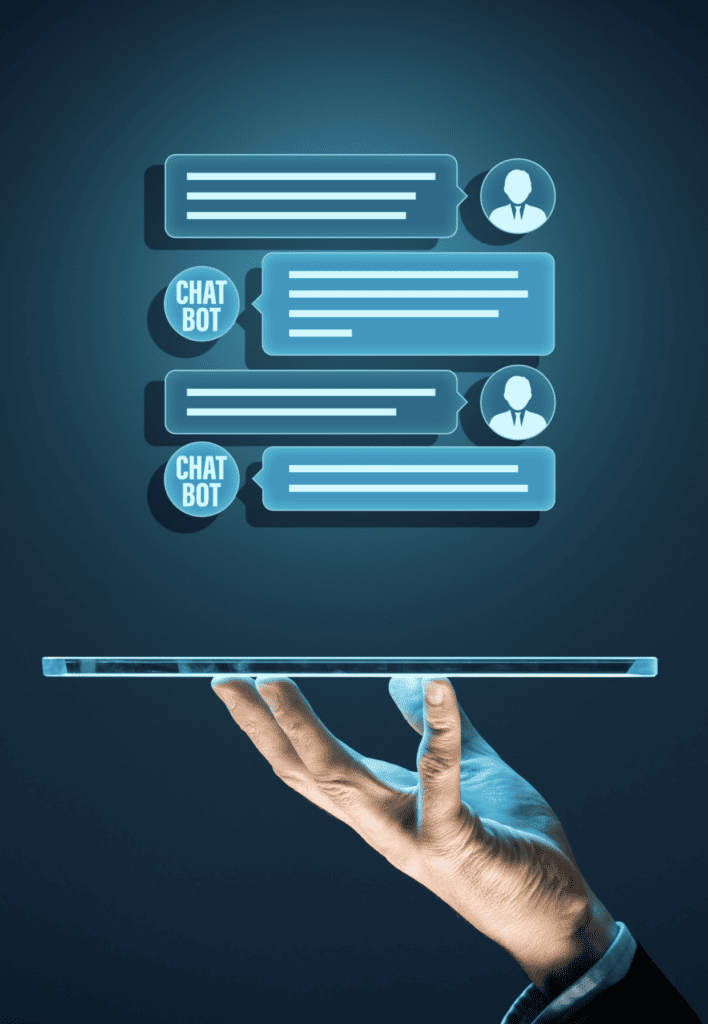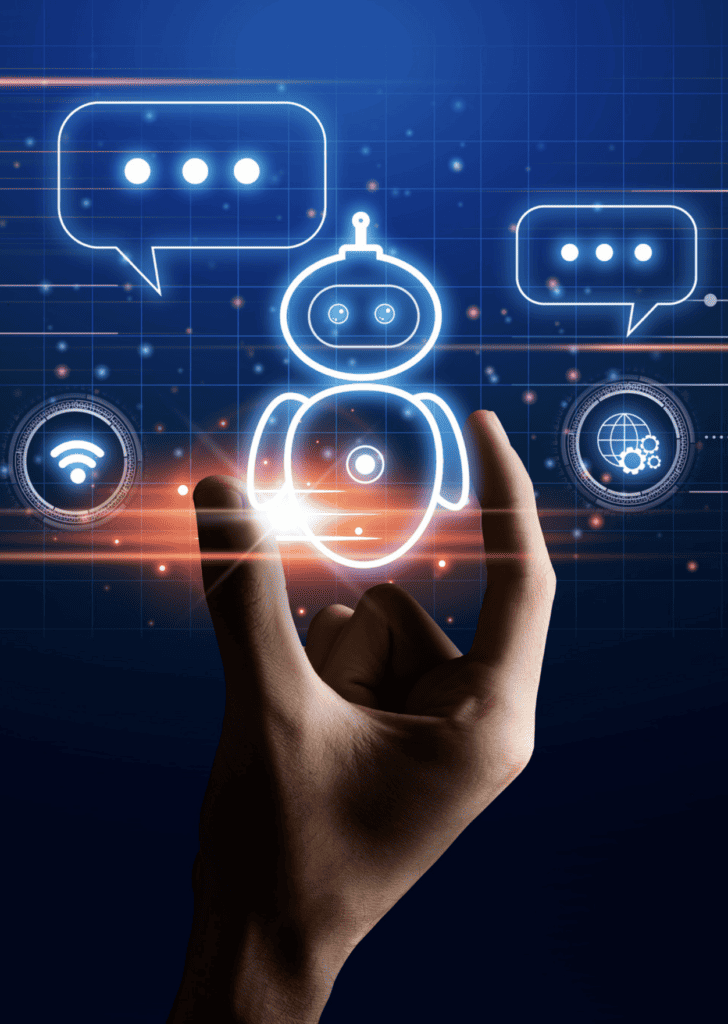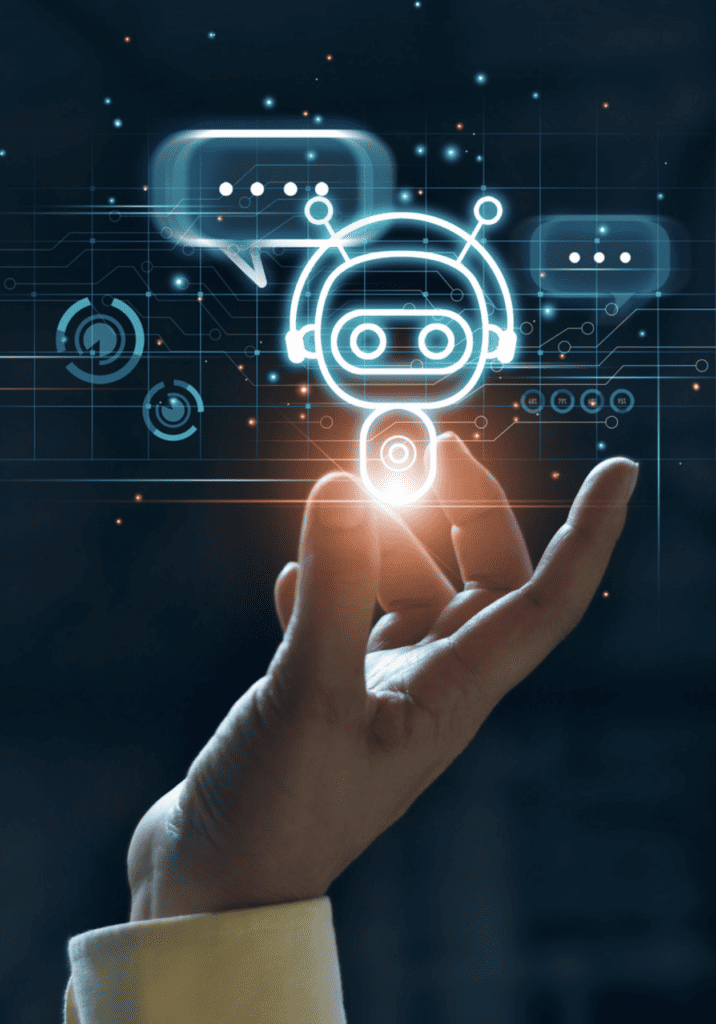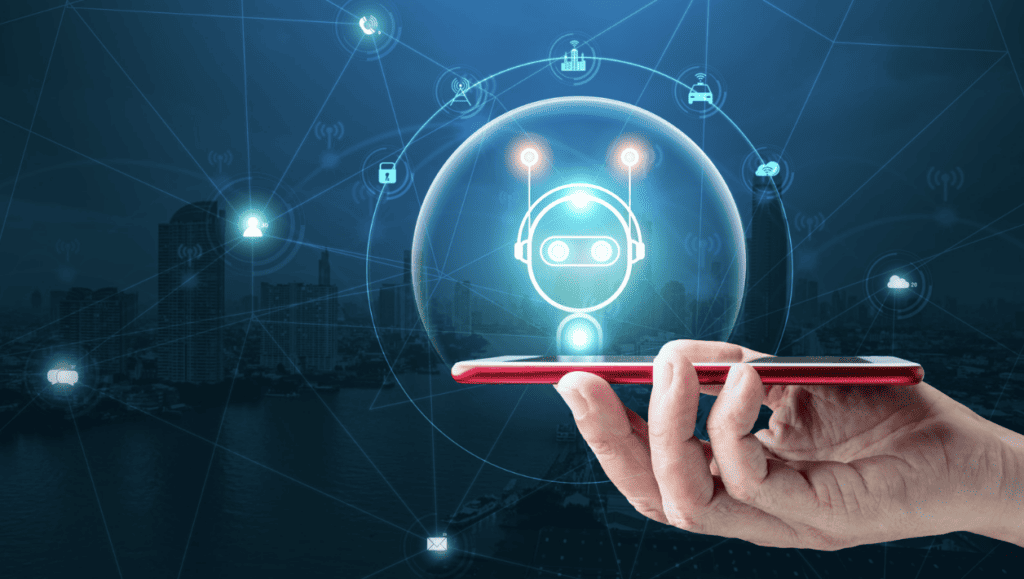
As technology advances, we immerse ourselves in a digital world where human-like interactions with machines are becoming increasingly common. Chatbots, computer programs designed to engage in text or voice conversations with users, have made significant strides in mimicking human interactions. However, despite their advancements, it is important to recognise that technology has yet to surpass human interaction, particularly in coaching. In this blog, we will delve into the world of chatbots and AI, their capabilities, and why they still need to catch up compared to human coaching interactions.
So, what are chatbots, and what do we mean by AI?
Chatbots are software applications programmed to simulate human conversation. They can interact with users through text- or voice-based interfaces, providing information, answering questions, or engaging in meaningful discussions. On the other hand, Artificial Intelligence (AI) refers to computer systems and programs that can perform tasks that typically require human intelligence.
What are the limitations of Chatbots regarding coaching?
While chatbots have made impressive progress in engaging with users, they still need help replicating the unique working relationship between a coach and a client. Coaching involves more than just providing information or answering queries. A coach must establish a successful working relationship based on empathy, effective communication skills, and a deep understanding of the client’s needs beyond words.
In a study where patients interacted with a chatbot assistant on an online healthcare forum, the chatbot’s responses were preferred over those of doctors, scoring higher in quality and empathy. However, it is essential to note that the chatbot’s advantage in providing quality answers stems from its access to a vast medical knowledge database. While it excelled in knowledge-based responses, it lacked the human touch that a coach can provide in understanding and addressing emotional and nuanced aspects of a client’s situation.
Which are the types of Chatbots available today:
There are two main types of chatbots: rule-based chatbots and AI-powered chatbots.
Rule-based chatbots operate on a set of predefined rules and responses. They utilise simple logic, such as “If-Then” statements, to address specific queries. Although they can be useful in guiding individuals through e-learning programs or providing structured exercises, their dialogue capabilities are limited outside of a specific context. One notable example of an early chatbot is ‘ELIZA,’ developed by Joseph Weizenbaum in the 1960s. ELIZA could engage in Rogerian dialogue with a client, relying on keywords in their responses to simulate conversation.
While clients might experience the sensation of interacting with an actual therapist, it is crucial to recognise the limitations of such rule-based chatbots in addressing complex coaching needs.
AI-powered chatbots incorporate artificial intelligence, enabling them to perform tasks that require human-like intelligence. Rather than relying on predefined rules, they learn implicit patterns and structures from training data using machine learning techniques. AI language models, such as Google BARD and ChatGPT, fall under this category. These advanced chatbots, trained on vast amounts of text data, can engage in more human-like conversations.


For example, ChatGPT is trained to understand language nuances, humour, sarcasm, empathy, and figurative language. It can incorporate context from previous questions, allowing for a more interactive and dynamic dialogue.
However, these AI-powered chatbots are not infallible and can sometimes provide incorrect or misleading answers.
Despite the advancements in chatbot technology, the essence of coaching lies in the unique connection and rapport built between a coach and a client. A coach’s empathic attitude, active listening skills, and ability to understand the client’s emotions and motivations are crucial elements that machines cannot replicate.
While chatbots may excel in providing information and responding to specific queries, they need more depth of understanding and intuition that comes naturally to human coaches. The nuances of human communication, such as non-verbal cues and emotional support, remain essential in the coaching process.
As L&D solution providers, we have harnessed extensive knowledge to realise the potential of chatbots in supporting us. We are thrilled to announce the upcoming launch of our AI-powered chatbot, irobin, which will revolutionise how we engage with clients and streamline our operations. By embracing our technology-enhanced structure and implementing irobin in-house, we are taking a bold step towards the future of L&D. This cutting-edge solution ensures that we stay at the forefront of the industry, delivering unparalleled value and staying connected to our client’s evolving needs.
Considering all this, a chatbot can allow for pre-screening processes or performing concrete, tangible goals but cannot delve into the depth of human interaction.
Chatbots and AI have undoubtedly made significant strides in simulating human interaction and providing valuable assistance in various domains. However, when it comes to coaching, the inherent complexities of human emotions, context, and the establishment of a deep working relationship make it challenging for technology to surpass human interaction.
While chatbots can offer support in certain coaching aspects, they should be seen as tools to complement human coaching rather than replace it entirely. As technology evolves, it is crucial to appreciate the unique qualities that make human coaching an irreplaceable and invaluable resource for personal and professional growth.




